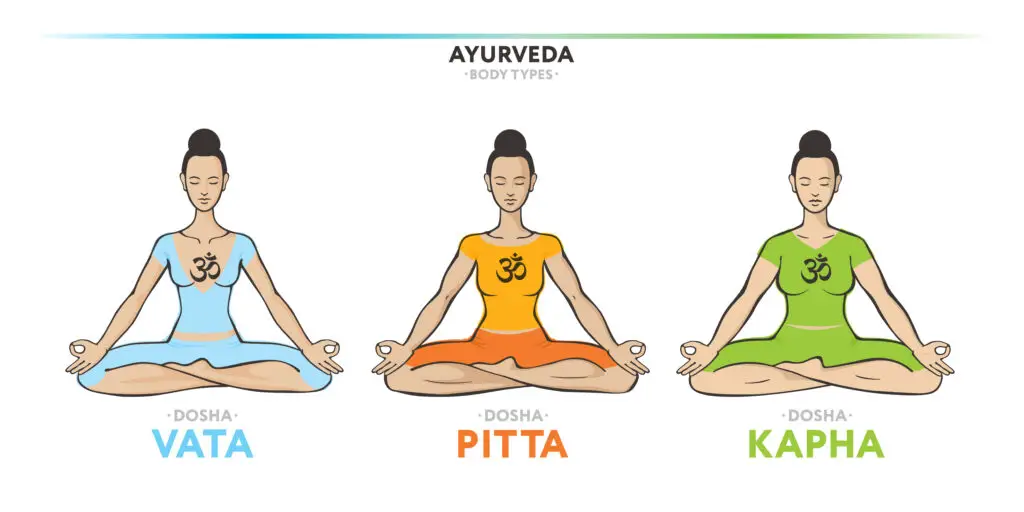
Ayurveda, the ancient Indian system of holistic medicine, offers a profound understanding of health and wellness by focusing on the balance of three fundamental energies, or Doshas: Vata, Pitta, and Kapha. These Doshas govern the physical, mental, and emotional well-being of every individual. If you’re new to Ayurveda, understanding Doshas is your first step toward achieving balance and harmony in your life.
In this beginner’s guide, we’ll break down the concept of Doshas, their characteristics, and their role in maintaining overall health. Whether you’re looking to improve your digestion, reduce stress, or simply learn more about yourself, this post will simplify the complex world of Ayurveda.
What Are Doshas in Ayurveda?
The word “Dosha” in Sanskrit means “fault” or “imbalance,” but in Ayurveda, it represents the dynamic energies that make up your body and mind. These energies are derived from the five elements:
- Vata: A combination of air and space.
- Pitta: A combination of fire and water.
- Kapha: A combination of earth and water.
Every individual has all three Doshas, but one or two usually dominate, shaping your physical, mental, and emotional characteristics. This unique blend is called your Prakriti, or natural constitution.
The Three Doshas: Vata, Pitta, and Kapha
1. Vata Dosha: The Energy of Movement
Elemental Composition: Air and space
Primary Functions: Movement, communication, creativity
Vata governs activities like breathing, circulation, and the movement of thoughts.
- Physical Traits: Thin build, dry skin, cold hands and feet.
- Mental Traits: Creative, quick thinkers, and adaptable.
- Emotional Traits: Energetic but prone to anxiety and restlessness.
Signs of Vata Imbalance: Dry skin, constipation, anxiety, insomnia.
How to Balance Vata: Eat warm, nourishing foods, follow a regular routine, and practice grounding exercises like yoga or meditation.
2. Pitta Dosha: The Energy of Transformation
Elemental Composition: Fire and water
Primary Functions: Digestion, metabolism, and energy production
Pitta governs all forms of transformation in the body, including digestion and temperature regulation.
- Physical Traits: Medium build, warm body temperature, sensitive skin.
- Mental Traits: Intelligent, goal-oriented, and confident.
- Emotional Traits: Passionate but can be irritable or impatient.
Signs of Pitta Imbalance: Heartburn, skin rashes, irritability, overheating.
How to Balance Pitta: Eat cooling foods, avoid spicy dishes, and spend time in nature.
3. Kapha Dosha: The Energy of Stability
Elemental Composition: Earth and water
Primary Functions: Structure, lubrication, and immunity
Kapha provides stability and endurance, governing the body’s structure and emotional resilience.
- Physical Traits: Stocky build, oily skin, strong stamina.
- Mental Traits: Calm, nurturing, and dependable.
- Emotional Traits: Loving and empathetic but prone to lethargy or stubbornness.
Signs of Kapha Imbalance: Weight gain, congestion, depression, oversleeping.
How to Balance Kapha: Eat light, warming foods, engage in regular physical activity, and try invigorating practices.
How to Identify Your Dominant Dosha
If you’re unsure of your Dosha, here’s a quick guide:
- Body Type: Thin and lean (Vata), medium and muscular (Pitta), stocky and solid (Kapha).
- Skin and Hair: Dry and rough (Vata), sensitive and prone to redness (Pitta), oily and thick (Kapha).
- Energy Levels: High energy bursts followed by fatigue (Vata), consistent but intense energy (Pitta), slow but steady energy (Kapha).
For a deeper understanding, consult an Ayurvedic practitioner who can provide a detailed assessment.
Frequently Asked Questions
1. Can my Dosha change over time?
While your Prakriti remains the same, your current state (Vikriti) can fluctuate due to lifestyle, diet, or stress. Ayurvedic practices help restore balance.
2. What happens if my Doshas are imbalanced?
Imbalances can lead to physical or emotional discomfort, such as inflammation (Pitta) or sluggishness (Kapha).
Conclusion: Embrace Your Dosha
Understanding the three Doshas—Vata, Pitta, and Kapha—opens the door to a holistic way of living. Whether you’re a creative Vata, a passionate Pitta, or a nurturing Kapha, embracing your unique constitution allows you to thrive.
Ready to dive deeper into your Ayurvedic journey? Begin by identifying your Dosha and exploring small lifestyle changes to restore balance. Remember, Ayurveda isn’t just a system of medicine; it’s a way of life.